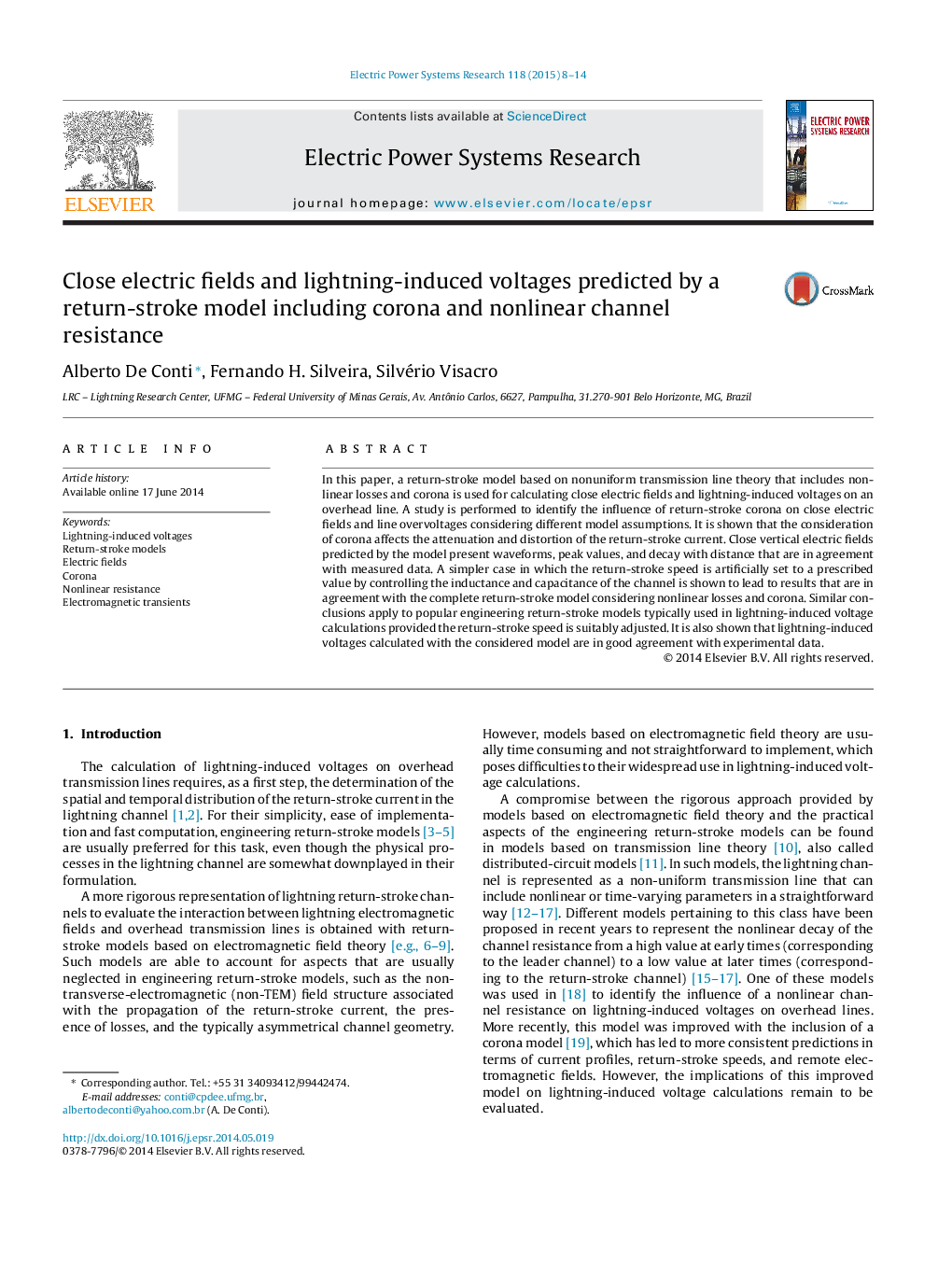| Article ID | Journal | Published Year | Pages | File Type |
|---|---|---|---|---|
| 704838 | Electric Power Systems Research | 2015 | 7 Pages |
•Induced voltages and electric fields are calculated with a nonlinear return-stroke model.•Nonlinear losses and corona lead to remote electric fields in agreement with measured data.•Induced-voltage waveforms are nearly insensitive to variations in lightning corona parameters.•Engineering models and a corona-less model can lead to results similar to the complete model.•The proposed nonlinear return-stroke model reproduces measured lightning-induced voltages accurately.
In this paper, a return-stroke model based on nonuniform transmission line theory that includes nonlinear losses and corona is used for calculating close electric fields and lightning-induced voltages on an overhead line. A study is performed to identify the influence of return-stroke corona on close electric fields and line overvoltages considering different model assumptions. It is shown that the consideration of corona affects the attenuation and distortion of the return-stroke current. Close vertical electric fields predicted by the model present waveforms, peak values, and decay with distance that are in agreement with measured data. A simpler case in which the return-stroke speed is artificially set to a prescribed value by controlling the inductance and capacitance of the channel is shown to lead to results that are in agreement with the complete return-stroke model considering nonlinear losses and corona. Similar conclusions apply to popular engineering return-stroke models typically used in lightning-induced voltage calculations provided the return-stroke speed is suitably adjusted. It is also shown that lightning-induced voltages calculated with the considered model are in good agreement with experimental data.
